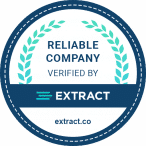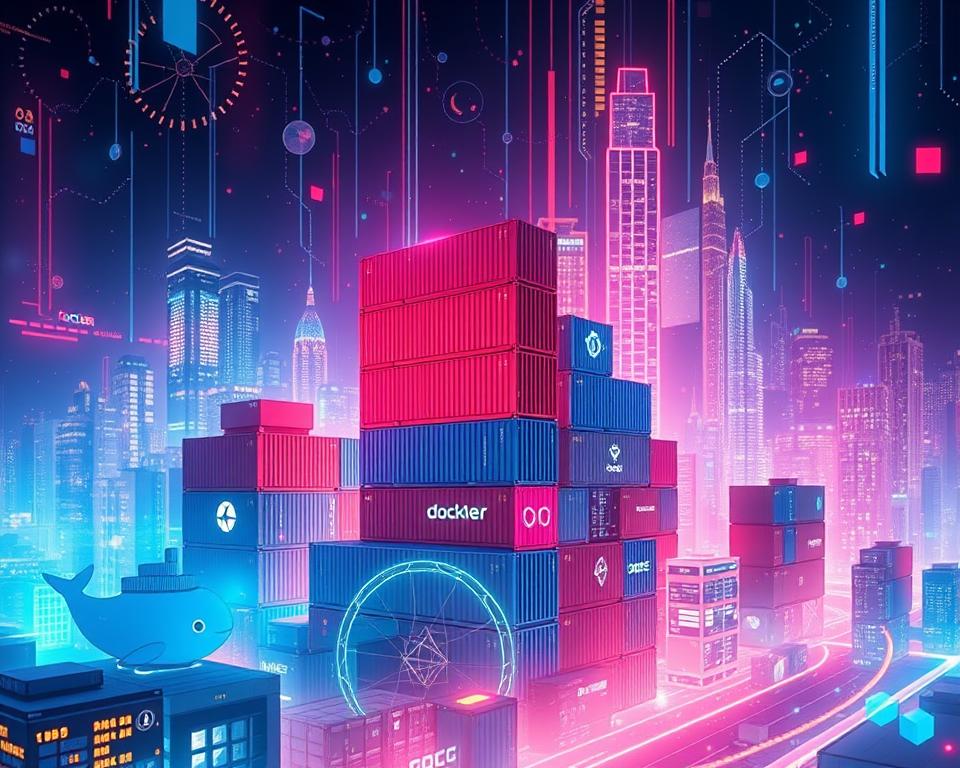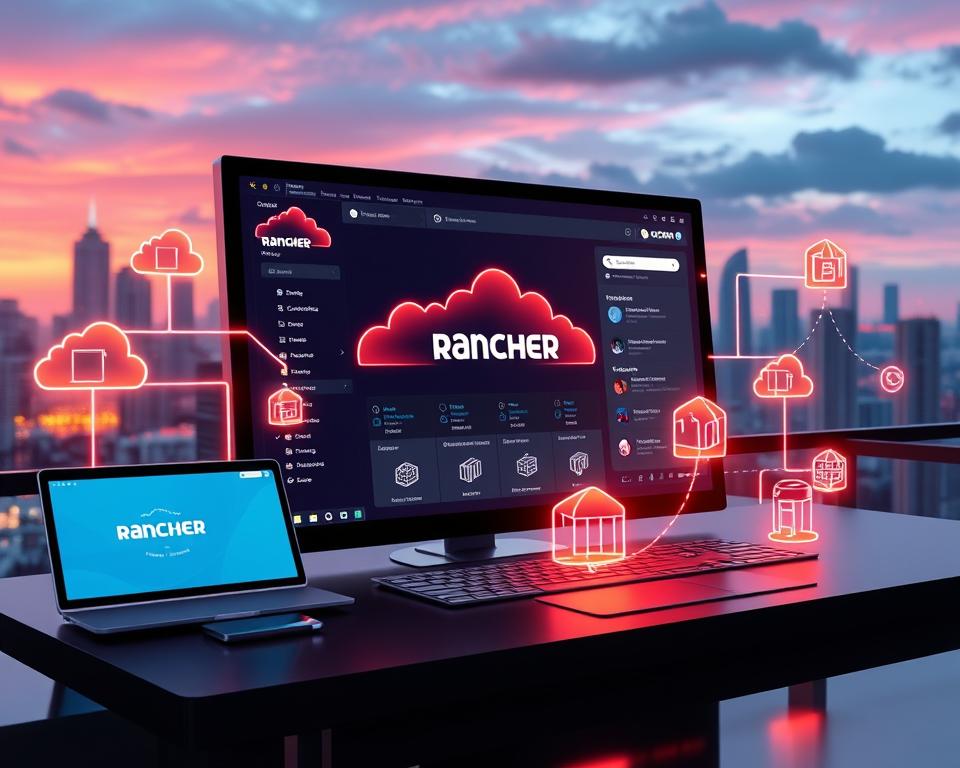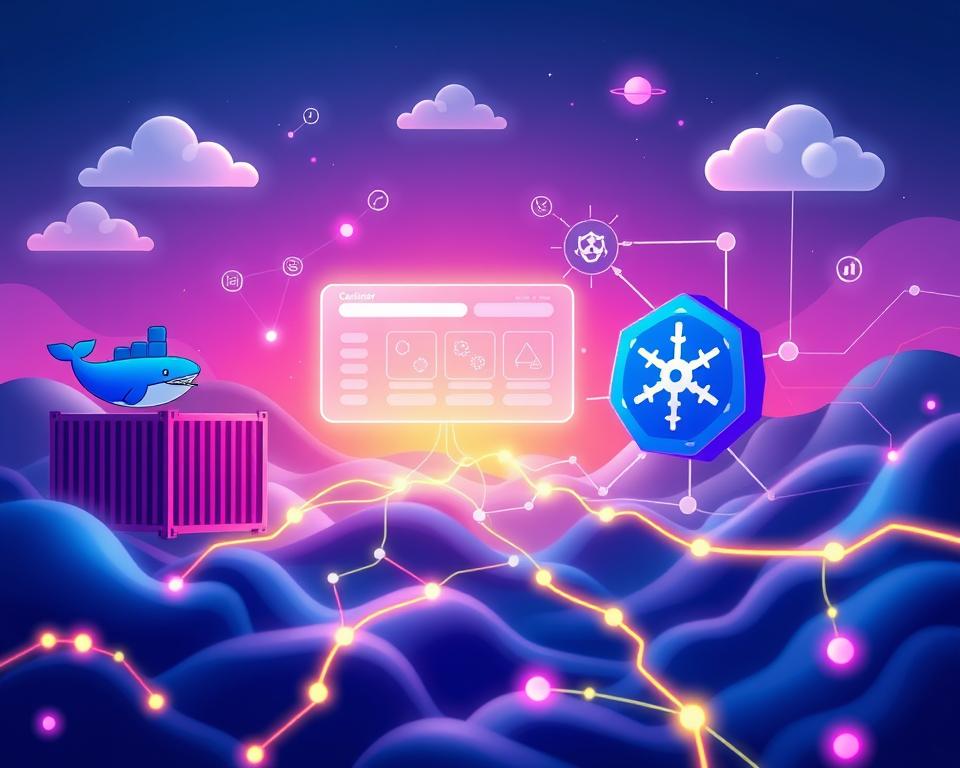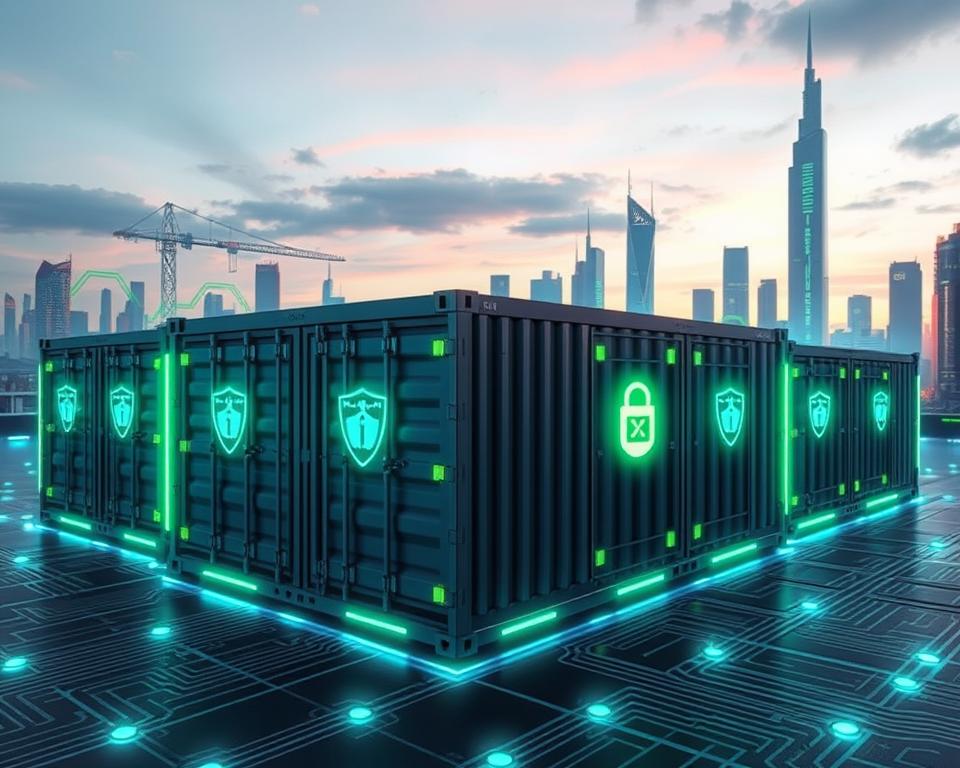The world of enterprise software development has changed a lot. Docker, Rancher, and Kubernetes have made a big impact. They help developers, DevOps teams, and IT pros manage complex systems better.
Containerization is key to this change. It makes apps and their needs into easy-to-move packages. This makes software more reliable and easier to grow. With Kubernetes, these benefits get even bigger, helping companies work faster and better.
This guide will explore Docker, Rancher, and Kubernetes. We’ll see how they work together and their benefits. It’s for developers, DevOps folks, and IT leaders. You’ll learn about the latest in container-based development and management.
Table of Contents
Key Takeaways:
- Containerization has become a transformative technology in modern enterprise software development.
- Docker, Rancher, and Kubernetes offer innovative solutions for deploying, managing, and scaling cloud-native applications.
- These technologies enable greater consistency, reliability, and scalability in software deployments.
- The integration of containerization with orchestration platforms, such as Kubernetes, has amplified the benefits of these solutions.
- Enterprises can leverage Docker, Rancher, and Kubernetes to drive innovation, improve IT operations, and achieve greater business value.
Understanding Container Orchestration Fundamentals
In today’s fast-paced world of software development, container architecture is changing the game. Container orchestration is key, managing the life cycle of apps in containers at a large scale.
Key Components of Container Architecture
The main parts of container architecture are the container runtime, engine, and image. Together, they package an app and its needs. This ensures apps run smoothly in different settings.
Evolution of Containerization Technologies
Containerization started in the early 2000s with Linux containers and FreeBSD jails. But Docker in 2013 really made it big. It made containers easy for developers and companies to use.
Basic Principles of Orchestration
- Automated Scaling: Orchestration platforms scale apps up or down as needed. This saves resources.
- High Availability: These systems keep apps running smoothly, ensuring they’re always available.
- Load Balancing: Orchestration tools spread traffic evenly. This boosts app performance and reliability.
- Declarative Configuration: Developers set app states with simple files. This makes deployment and management easier.
Knowing about container architecture, containerization history, and orchestration principles helps organizations use containers fully. This unlocks the power of container-based app development and deployment.
The Rise of Docker in Enterprise Development
In the world of enterprise development, Docker has made a big impact. It has changed how companies deliver software, making it better, bigger, and safer.
Docker works by putting apps and their needs into one package, called a container. These containers are easy to move and grow, making it simpler to manage software.
Embracing the Docker Ecosystem
The Docker ecosystem has grown a lot, offering many tools for developers. It includes things like Kubernetes for managing apps and cloud services for deploying them. This makes it easier to handle complex systems.
Companies using Docker see big wins like better use of resources and lower costs. They can also move apps around quickly, speeding up development and testing.
| Key Benefits of Docker Adoption | Percentage of Enterprise Adoption |
|---|---|
| Improved resource utilization | 75% |
| Reduced infrastructure costs | 68% |
| Enhanced application portability | 82% |
| Faster development and testing cycles | 71% |
As more companies use Docker, the way we make software will keep getting better. This will lead to more innovation and efficient development.
“Docker has become the de facto standard for containerization in the enterprise, enabling organizations to achieve greater agility, scalability, and cost savings.”
Rancher as a Container Management Platform
The container revolution is changing how we develop software. Rancher is a key player in managing containers across different settings. It makes container management easier, helping companies deploy and run containerized apps smoothly.
Rancher Architecture Overview
Rancher’s core is a strong, scalable design for managing containers. It has a central control plane for managing many Kubernetes clusters. Agents handle deploying and managing containers on various infrastructures.
Multi-cluster Management Capabilities
- Rancher lets you manage containers across different Kubernetes clusters. This is true no matter the infrastructure or location.
- This flexibility helps teams manage their Rancher platform, container management, and multi-cluster orchestration in one place.
Security Features and Compliance
Keeping containers secure and compliant is crucial for businesses. Rancher offers strong security features like role-based access control and network policies. It also has integrated vulnerability scanning.
With Rancher, companies can deploy containerized apps safely. They know their infrastructure is secure and meets compliance standards.
| Feature | Description |
|---|---|
| Role-based Access Control (RBAC) | Granular access controls that allow administrators to define and enforce permissions for different users and teams. |
| Network Policies | Sophisticated network isolation and segmentation capabilities to restrict communication between containers and enforce security boundaries. |
| Vulnerability Scanning | Integrated tools that identify and remediate security vulnerabilities within container images, ensuring the overall security of the deployment. |
Using theRancher platform helps organizations manage containers better. They get to use its strongmulti-cluster orchestration features. All this is done while keeping security and compliance top-notch.
Kubernetes Ecosystem and Its Business Impact
Kubernetes has changed how businesses handle container-based apps. It’s a key player in managing and scaling containerized apps. This makes it easier for companies to manage their apps.
Kubernetes offers features like automatic scaling, self-healing, and seamless load balancing. These features attract businesses looking to improve their container setup. It lets companies focus on their main goals while keeping their systems reliable and scalable.
Kubernetes impacts businesses in many ways:
- Improved Efficiency: Kubernetes makes deploying, scaling, and managing apps easier. This leads to better efficiency and less IT work.
- Enhanced Scalability: Kubernetes scales resources automatically. This means businesses can quickly adapt to changing needs, serving customers better.
- Increased Reliability: Kubernetes keeps apps running smoothly and quickly recovers from issues. This ensures users have a great experience.
- Accelerated Development: Kubernetes works well with DevOps and CI/CD. This lets businesses quickly add new features and updates, staying competitive.
As more businesses use Kubernetes, the benefits are clear. Kubernetes streamlines app management, boosts scalability, and drives innovation. It’s a key part of today’s tech world.
| Kubernetes Adoption Benefits | Metrics |
|---|---|
| Improved Efficiency | 30% reduction in IT overhead |
| Enhanced Scalability | 50% increase in application scaling capacity |
| Increased Reliability | 99.99% uptime for mission-critical applications |
| Accelerated Development | 2x faster deployment of new features |
“Kubernetes has become the de facto standard for container orchestration, enabling businesses to streamline their application management and unlock unprecedented levels of agility and scalability.”
Docker Rancher Kubernetes Development Services
Using Docker, Rancher, and Kubernetes together opens up new possibilities for businesses. It helps them manage and deploy containers more efficiently. These tools work together to solve the challenges of modern app development and deployment.
Integration Strategies
Integrating Docker, Rancher, and Kubernetes makes managing containers easier. Rancher’s easy-to-use interface helps manage Kubernetes clusters. Docker’s containerization lets apps run smoothly in different places. This teamwork helps teams work better together and be more efficient.
Deployment Models
Businesses can choose from many deployment models. Docker makes apps easy to package and deploy in various settings. Rancher makes managing these apps simpler with its central platform. Adding Kubernetes makes deployments more flexible and scalable, helping apps grow or shrink as needed.
Service Scalability Options
The Docker Rancher Kubernetes combo offers many ways to scale services. Kubernetes’ auto-scaling and Rancher’s multi-cluster management let services grow or shrink fast. This means apps can handle more users or changes without losing quality or reliability.
| Feature | Docker | Rancher | Kubernetes |
|---|---|---|---|
| Containerization | ✓ | – | – |
| Orchestration | – | ✓ | ✓ |
| Multi-cluster Management | – | ✓ | – |
| Scalability | – | ✓ | ✓ |
Cloud-Native Application Development Practices
The rise of containerization and orchestration has changed cloud-native app development. Now, developers can make apps that scale, are resilient, and move easily between cloud environments. At the core of this change are microservices and serverless architecture.
Microservices break down big apps into smaller parts. These parts can be worked on, deployed, and scaled on their own. This makes apps more flexible, agile, and fault-tolerant. It’s why many choose cloud-native development.
Serverless architecture hides the underlying tech. This lets developers just write and deploy code without worrying about servers.
These practices bring many benefits. They make apps scale better, reduce work for IT, and help developers work faster. Using tools like Docker and Kubernetes makes deploying apps smoother and more reliable.
| Cloud-Native Development Practices | Key Benefits |
|---|---|
| Microservices Architecture |
|
| Serverless Architecture |
|
By using these practices, companies can innovate more, work more efficiently, and stay competitive in the fast-changing digital world.
“Cloud-native development is not just a technical revolution, but a fundamental shift in how we think about building and deploying software solutions.”
Container Security and Compliance Standards
Container technologies like Docker, Rancher, and Kubernetes are becoming more popular. This means we need to focus on keeping container environments safe and following rules. Containers often deal with sensitive data and important business tasks. So, it’s key to have strong security and follow industry standards.
Security Best Practices
Keeping containers secure needs a layered approach. Here are some important steps:
- Use strict access controls and user checks
- Scan container images for vulnerabilities and fix them fast
- Follow the principle of least privilege to reduce risk
- Use network segmentation and secure channels
- Watch container activity and logs for odd behavior
Regulatory Compliance Frameworks
Containers must follow certain rules based on the data they handle. This includes:
- PCI-DSS for those who process credit card info
- HIPAA for healthcare and protected health info
- GDPR for personal data of EU citizens
Vulnerability Management
Managing vulnerabilities is crucial for container security. It means finding, checking, and fixing weaknesses in images, runtime, and infrastructure. Good practices include:
| Practice | Description |
|---|---|
| Image Scanning | Scanning images for vulnerabilities and updating them |
| Runtime Monitoring | Watching running containers for signs of trouble |
| Patch Management | Keeping systems and components up-to-date with security fixes |
By following security best practices, sticking to rules, and managing vulnerabilities, companies can make their container environments safer. This protects their important assets.
Performance Optimization in Container Environments
Containerization technologies like Docker and Kubernetes are getting more popular. This means making container environments perform better is now key for businesses. Improving performance, resource optimization, and containerization efficiency is crucial. These factors greatly affect how well cloud-native apps scale, are reliable, and cost-effective.
To boost container performance, managing resources well is important. By watching and setting CPU, memory, and storage usage, you can make sure containers run smoothly. This reduces waste and boosts how much work they can do.
- Set up smart rules for resource use to stop any one container from using too much. This makes sure everyone gets a fair share.
- Use tools that understand containers to see how resources are being used. This helps spot any issues.
- Keep container images small and layers few to make them start up faster and run more efficiently.
Improving network performance is also vital. Good network settings and load balancing make apps faster and more scalable.
- Make network settings efficient to cut down on delays and boost speed.
- Use smart ways to spread out traffic among containers to keep things running smoothly.
- Use service meshes and API gateways to better understand and control the network.
| Metric | Baseline | Optimized | Improvement |
|---|---|---|---|
| Container Startup Time | 15 seconds | 8 seconds | 47% |
| CPU Utilization | 65% | 82% | 26% |
| Memory Consumption | 128 MB | 92 MB | 28% |
By focusing on container performance optimization in a big way, companies can really benefit. They can make apps more scalable, cut down on costs, and work more efficiently.
“Optimizing container performance is not a one-time effort, but a continuous process that requires constant monitoring, analysis, and fine-tuning to ensure your applications are running at their best.”
Microservices Architecture Implementation
More businesses are using cloud-native technologies, leading to a rise in microservices architecture. This method breaks down big apps into smaller, independent services. These services talk to each other through clear interfaces. To make a microservices system work well, you need service mesh integration, API gateway setup, and load balancing.
Service Mesh Integration
A service mesh is a special layer that helps services talk securely to each other. It handles things like traffic, finding services, and keeping things running when there’s a problem. This makes sure services work well together and stay reliable.
API Gateway Configuration
An API gateway is the main entry point for all requests to the services. It makes it easier to manage who gets in and how traffic flows. This simplifies things and makes it easier for clients to connect.
Load Balancing Strategies
As more services are added, it’s important to balance the load. Load balancers spread out traffic so no one service gets too much. This keeps things running smoothly and efficiently.
| Component | Description | Key Benefits |
|---|---|---|
| Service Mesh | Dedicated infrastructure layer for secure communication between microservices | Enhances resilience, scalability, and fault tolerance |
| API Gateway | Centralized entry point for client requests to microservices | Simplifies architecture, improves security and user experience |
| Load Balancing | Distributes incoming traffic across multiple service instances | Optimizes performance, ensures high availability |
By combining these key parts, companies can build a strong and flexible microservices system. This leads to faster development, better reliability, and better user experiences.
DevOps Integration and CI/CD Pipelines
In the world of containerized apps, DevOps and CI/CD pipelines are key. Docker, Rancher, and Kubernetes make DevOps integration smooth. They help organizations improve their software development and deployment.
Using DevOps practices like automated testing and continuous integration boosts app efficiency. These platforms help teams create strong CI/CD pipelines. This automates the build, test, and deployment stages, ensuring apps are always up-to-date and reliable.
Kubernetes is a top choice for CI/CD workflows. Its declarative nature and wide range of tools make it perfect for automating app deployment and scaling. Rancher offers a user-friendly interface and extra management tools, making Kubernetes easier to manage.
| Benefit | Description |
|---|---|
| Faster Delivery | Automated CI/CD pipelines enable rapid and frequent deployments, reducing the time-to-market for new features and updates. |
| Improved Reliability | Consistent and repeatable deployment processes, coupled with automated testing, help ensure the stability and reliability of containerized applications. |
| Scalability | Container orchestration platforms like Kubernetes provide the flexibility to scale applications up or down based on demand, enabling efficient resource utilization. |
By embracing DevOps and container orchestration, organizations can unlock their apps’ full potential. This leads to innovation, agility, and operational excellence.
“Containerization and DevOps go hand-in-hand, as they both aim to streamline the software development and delivery process. Implementing CI/CD pipelines with container orchestration platforms is a key step towards achieving true agility and responsiveness in the modern software landscape.”
Monitoring and Logging Solutions
In the fast-paced world of container orchestration, it’s vital to keep an eye on your environment’s health. Container monitoring and logging solutions are key for developers and operations teams. They help ensure your containerized apps run smoothly and reliably.
Observability Tools
Observability tools unlock your container infrastructure’s full potential. They give you deep insights into your containers’ behavior and performance. This lets you quickly spot and fix problems. These tools work well with Docker and Kubernetes, giving you a complete view of your setup.
Metrics Collection and Analysis
Collecting and analyzing metrics is key in container monitoring. You get data on CPU, memory, network, and storage use. This data helps you understand how well your containers are doing. Advanced metrics analysis finds bottlenecks and helps optimize resource use.
Log Management Systems
Good log management is essential in container-based setups. Centralized logging solutions collect and manage logs from many containers. This makes troubleshooting easier and helps you understand your app’s behavior better. These systems offer features like log filtering and visualization, helping teams solve problems fast.
Using container monitoring, observability tools, metrics analysis, and strong logging solutions keeps your container environment in check. This lets organizations optimize performance, meet compliance, and offer top-notch user experiences.
Disaster Recovery and High Availability
In the world of containerized applications, keeping things running smoothly is key. This means being ready for unexpected events like infrastructure failures or data loss. We’ll look at how to make sure your container apps stay up and running.
For disaster recovery, creating backups is essential. You can make snapshots of your containers and store them safely. This way, you can quickly get your apps back online if disaster strikes.
High availability means your apps keep running even when something goes wrong. You can use load balancing and failover to make sure your apps stay online. Tools like Kubernetes help by automatically scaling and fixing issues.


